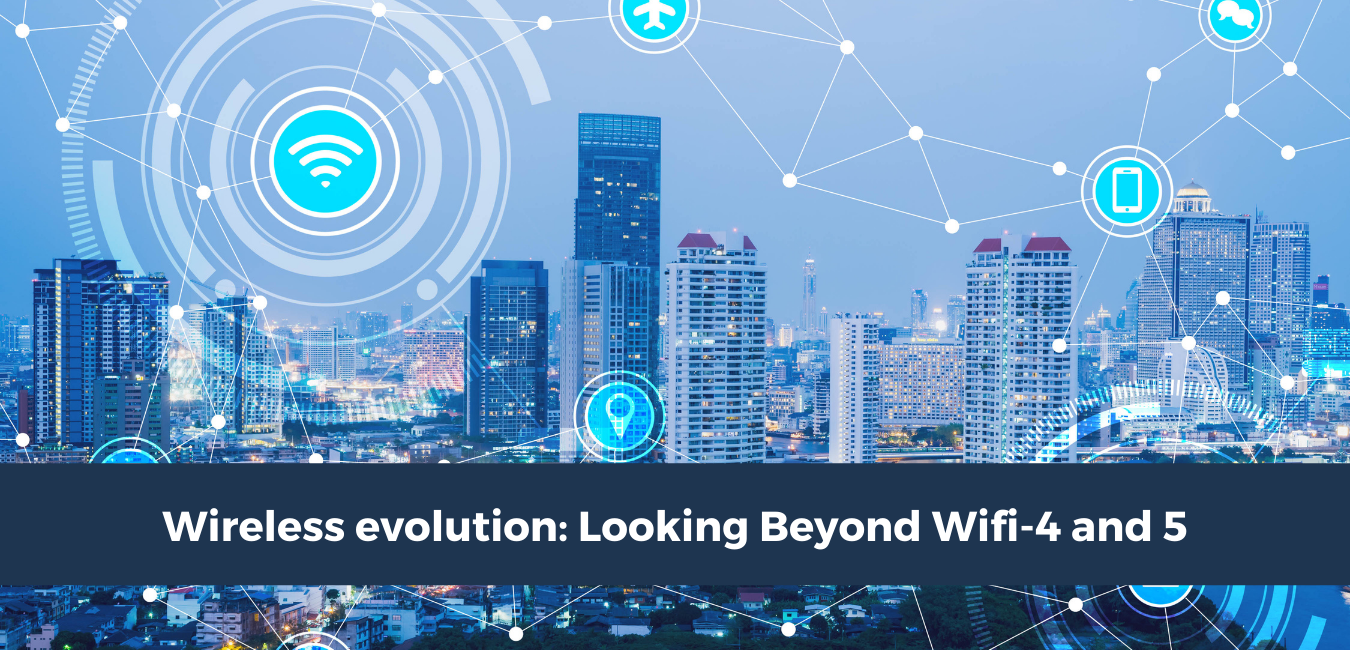Wireless Evolution: Looking Beyond Wifi-4 and 5

Wi-Fi has come a long way from being a mere option to an indispensable tool. Its use for education, business operations, entertainment, and so much more makes it a part of the cultural fabric of daily living. Did you know that Wi-Fi will take over mobile data by 2022? So whether your interest lies in generic entertainment goals or wishes to think about your corporate goals, understanding the recent Wi-Fi changes is a must.
Understanding the recent changes in this space will help you plan smartly and opt for choices to improve efficiency and effectiveness. Let's begin!
The Old Dimension: Wifi-4 and 5
You are probably still sitting there at the bottom of the funnel. But let's talk about the inception of Wifi-4 and 5 to understand more.
Wifi-4 came into existence back in 2007. It is still helpful in less challenging environments. Ideally, it operates on 2.4 and 5 GHz bands. Thus, you get longer and shorter coverage ranges at the same time. Ideally, Bluetooth works using such a signal. However, it also works in different channels like 20MHz and 40 MHz. Hence, one can use it to accumulate larger traffic. Ideally, it uses MIMO as the technique to send and receive a variety of radio signals.
Then came the next evolution in this space, Wifi-5. It came into existence back in 2013. It did not use 2.4GHz at all and started using only 5GHz. This was a beneficial change since the device could handle multiple users. Thus, opening routes for handling multiple clients using one access point. Here the providers could increase the channel width to around 160 MHz and another option of modulation to 256QAM. However, these were all theoretical rates that users never saw in reality. In the end, it was more chaotic than helpful.
The New Dimension: Wifi-6 and 7
Wifi-6 launched back in 2019. There were some fantastic improvements. However, the result wasn't as thrilling as anticipated. Wi-Fi 6 was hardly 37% better or quick, and they added 2.4GHz. Having said that, it does MU-MIMO. You get a data rate of around 9.6 Gbps. Is that the reason Wi-Fi 7 is already ready to launch?
Everyone is asking questions about the introduction of Wi-Fi 7.
- What will they get through this new model?
- Who will need this?
- When will it be available?
Like technologies are evolving, the evolution of Wi-Fi continues to improve performance, increase spectrum, efficiency, and reduce costs. But most importantly, the evolution is the result of improving the user experience. Many believe that together with 5G, this evolution will keep everyone connected and even reach the ones who aren't connected yet.
But before we talk about what's underway, let's give Wi-Fi 6 an introduction it deserves. Let's explain this evolution. The upgrade doesn't sound very efficient. However, imagine this. Can you have a conversation with many people at a given moment? You can do one thing at a time. Right? But what if you could do everything without getting confused? While for humans, it might be impossible. But with Wi-Fi 6, you can make conversations faster.
With this upgrade, the providers introduced OFDMA, which allows you to divide larger channels into smaller groups. Thus, it helps with multiple device communication, both ways.
Further, this upgrade optimizes crowded environments. Thus, it is beneficial in clearing congestion and avoiding any bad latency rates. It uses color packers to increase reliability and lower latency.
This is quite beneficial for a variety of options across different industries. For instance, if you think about remote surgeries, you require the highest resolution video with minimal or no lag whatsoever. In the same way, VR applications also require such channels. And Wi-Fi 6 can mitigate such issues.
What else?
Wi-Fi 6 is helpful in the following ways.
- Since it is a better version than its predecessor, it will allow customers to reduce wireless congestion. It implements different concepts so that there is congestion.
- Device density is much better. With the IoTs growing and skyrocketing, hundreds of devices will end up working simultaneously with a smaller range.
- It is pretty secure as well. Since it integrates WPA3, it allows the clients to preserve their data through encryption and other safer technologies. Thus, making it convenient.
Further, Wi-Fi 6E preserves all Wi-fi-6 features and adds to the existing system's capabilities. Here the providers can also help with 4K and higher video feeds. Thus, saving any infrastructure costs.
Wi-Fi 7: The Future is definitely bright
Many believe that it will arrive in the year 2024. It will have a Gigabit Ethernet killer that you have been waiting for. There will be an adoption of 4096-QAM. The channel will embrace around 16 spatial streams. This will benefit videos a lot. Since 8K videos use a lot of data and even longer time, it will help transmit and receive the content without any latency. Hence, one can expect better speed, more devices, and a better user experience. There is still a long way ahead. However, if industries like Cisco and Intel are correct, Wi-Fi and 5G will coexist for better performance for AI, edge, and other emerging technologies. Hence, it will benefit vendors and users alike.
Key Takeaways: Looking ahead for better technologies
Wireless technologies have transformed the market in many ways. The thought that once everyone thought like a wish finally came true because of this technology. The way it allows everyone to stay connected through lightning fast speed, it is definitely right to say that, we are getting the best of both worlds.
However, with so much evolution, the technology needs to improve too. And since the future is about a lot of wireless devices and connectivity without latency, Wi-Fi needs an upgrade to match the evolving technologies. Are you all set to move into a new upgraded version? Or will you wait to see how the world responds to the change? What will it be like after Wi-Fi-5? It’s time to make the final choice.








